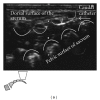Recent advances in epidural analgesia
- PMID: 22174708
- PMCID: PMC3232404
- DOI: 10.1155/2012/309219
Recent advances in epidural analgesia
Abstract
Neuraxial anesthesia is a term that denotes all forms of central blocks, involving the spinal, epidural, and caudal spaces. Epidural anesthesia is a versatile technique widely used in anesthetic practice. Its potential to decrease postoperative morbidity and mortality has been demonstrated by numerous studies. To maximize its perioperative benefits while minimizing potential adverse outcomes, the knowledge of factors affecting successful block placement is essential. This paper will provide an overview of the pertinent anatomical, pharmacological, immunological, and technical aspects of epidural anesthesia in both adult and pediatric populations and will discuss the recent advances, the related rare but potentially devastating complications, and the current recommendations for the use of anticoagulants in the setting of neuraxial block placement.
Figures





References
-
- Corning J. Spinal anesthesia and local medications of the cord. New York Journal of Medicine. 1885;42:483–485.
-
- Brown D. Spinal, epidural, and caudal anesthesia. In: Miller RD, editor. Miller’s Anesthesia. 6th edition. Philadelphia, Pa, USA: Elsevier; 2005. pp. 1653–1683.
-
- Hogan QH. Lumbar epidural anatomy. A new look by cryomicrotome section. Anesthesiology. 1991;75(5):767–775. - PubMed
-
- Hogan Q. Distribution of solution in the epidural space: examination by cryomicrotome section. Regional Anesthesia and Pain Medicine. 2002;27(2):150–156. - PubMed
-
- Deschner B, Allen M, de Leon O. Epidural blockade. In: Hadzic A, editor. Textbook of Regional Anesthesia and Acute Pain Management. 1st edition. New York, NY, USA: McGraw–Hill; 2006. pp. 237–269.
LinkOut - more resources
Full Text Sources

